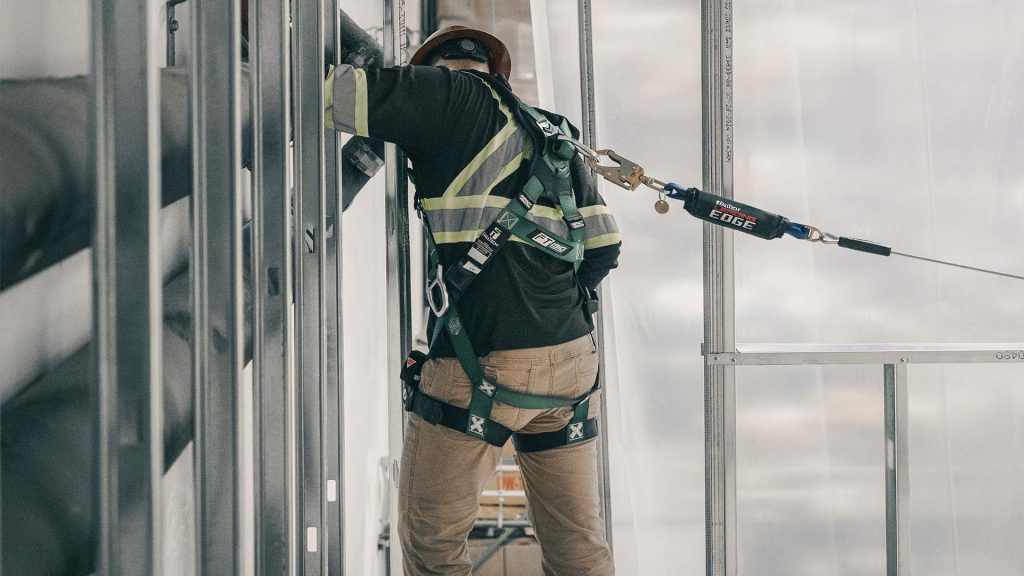Let’s be honest: despite all the safety posters and toolbox talks, falls are still the leading hazard in the workplace. Why? Because issues like complacency, inconsistent safety habits, and everyday environmental risks just keep showing up. To really fix this, we need to dig into what’s causing the problem, get everyone on board with safety, and use strategies that actually work—every single day.
Let’s break down why falls are still such a big deal—and what you can do to make your workplace safer.
Why Do Falls Keep Happening at Work?
You’d think with all the safety rules, warning signs, and fancy gear, falls would be a thing of the past. But nope! The numbers show falls still make up a big chunk of serious workplace injuries and deaths.

What’s going on?
– Changing Workplaces: More remote, hybrid, or non-traditional work environments mean safety standards can slip through the cracks.
– High-Risk Industries: Construction, warehouses, and manufacturing have built-in hazards that are tricky to manage.
– Complacency: People get used to the risks and start overlooking them.
– Underestimating Danger: Sometimes, workers (and managers) think “it won’t happen to me.”
The bottom line: preventing falls isn’t a one-and-done thing. It takes constant attention, adaptation, and a willingness to tackle new risks as they pop up. For those looking to improve safety measures, especially in high-risk regions, investing in proper fall protection Tampa solutions can make a significant difference.
The Most Common Causes of Workplace Falls
Let’s get specific. Here are some of the main culprits behind workplace falls:
- Slippery Surfaces and Spills
– Wet floors, leaks, or spilled drinks can turn any walkway into a slip-and-slide.
– High-traffic or damp areas are especially risky.
How to fight back:
– Use slip-resistant mats where needed.
– Clean up spills ASAP.
– Post clear warning signs.
– Train everyone to report and deal with spills right away.
- Improper Use of Safety Equipment
– Wearing a harness wrong? Using damaged gear? That’s a recipe for disaster.
– Sometimes, people skip equipment altogether or don’t know how to use it.
What helps:
– Regular training on how (and when) to use safety gear.
– Routine equipment checks and maintenance.
– Clear rules for inspecting and storing equipment.
- Poor Lighting
– Dimly lit areas hide hazards—think cords, uneven floors, or stray tools.
– Accidents are way more likely when people can’t see where they’re going.
Quick fixes:
– Upgrade lighting in key areas.
– Add motion sensors or task lighting if possible.
– Regularly check and replace burnt-out bulbs.
Why Safety Culture and Awareness Matter
Here’s the truth: all the rules and gear in the world don’t matter if people don’t care. A strong safety culture means:
– Everyone looks out for each other.
– Hazards get reported without fear of blame.
– Leaders walk the talk—safety isn’t just a box to check.
– Ongoing campaigns and reminders keep safety top-of-mind.
When safety is baked into your company’s DNA, people pay attention and falls go down.
How to Actually Reduce Fall Risks
Want to see real change? Here are two key strategies:
- Use Safety Equipment (The Right Way!)
– Make sure everyone has the right gear for the job.
– Inspect equipment before each use (look for wear, damage, or missing parts).
– Train workers to use gear correctly—no shortcuts.
– Stick to a regular maintenance schedule.
- Train, Train, Train
– Run hands-on workshops tailored to your team’s actual work.
– Focus on real scenarios, not just theory.
– Assess knowledge often and address gaps right away.
– Offer refreshers—don’t let training get stale.
Empowered, well-trained employees are your first line of defense against falls.
Making Training & Equipment Stick
Want your fall prevention efforts to last? Try this:
– Mix up training with demos, role-play, and real-life examples.
– Keep communication open about equipment—what’s working, what’s not.
– Make inspection and maintenance routines non-negotiable.
– Update training and gear as standards change.
Build a Fall-Proof Workplace: It’s a Team Effort
A truly safe workplace doesn’t happen by accident. Here’s a quick roadmap:
- Do regular safety audits. Find the weak spots.
- Assess hazards often. Look for new risks as things change.
- Write clear, practical policies. And make sure everyone knows them.
- Listen to workers’ feedback. They know where the real risks are.
- Keep the training coming. Safety isn’t a one-time lesson.
When you combine regular checks, open communication, and a culture that values safety, you’ll see real progress—and way fewer falls.
Bottom line: Falls are still a major threat, but with the right mix of vigilance, training, good gear, and a strong safety culture, you can turn things around. Stay alert, keep learning, and make safety everyone’s business—every day.





